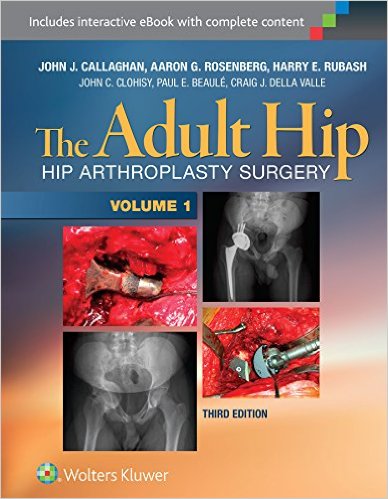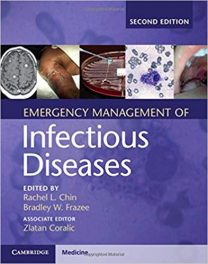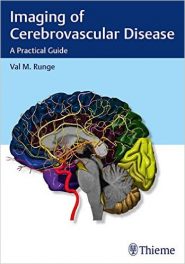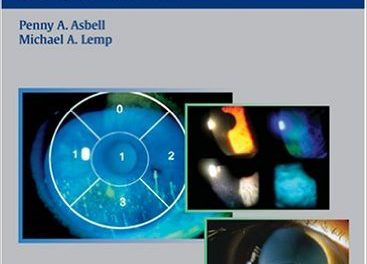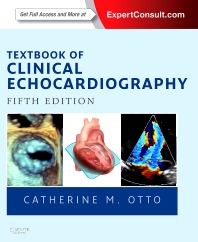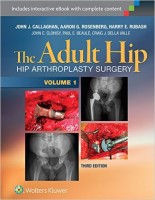 Editors: John J. Callaghan, MD; John C. Clohisy, MD; Aaron G. Rosenberg, MD; Paul E Beaule, MD; Harry E. Rubash, MD; and Craig J. Della Valle, MD
Editors: John J. Callaghan, MD; John C. Clohisy, MD; Aaron G. Rosenberg, MD; Paul E Beaule, MD; Harry E. Rubash, MD; and Craig J. Della Valle, MD
Publisher: Wolters Kluwer | Lippincott, Williams & Wilkins – 1,624 pages
Book Review by: Nano Khilnani
The purpose of this book is “to provide a comprehensive, organized text on adult hip pathology and treatment.” This was also the original purpose for its two previous editions.
The changes in the field of hip surgery have been significant since the first edition of this book appeared in 1998, or 18 years ago. “The entire field of hip preservation surgery has emerged, and now blossomed,” writes Dr. Daniel J. Berry in his Foreword. We did a review of an allied book entitled The Adult Hip – Hip Preservation Surgery in Biz India Online News in October 2014: http://www.bizindia.net/book-review-the-adult-hip-hip-preservation-therapy/
In terms of primary hip replacement, whereas in the past there were high rates of the implant loosening and problems with bearing surface wear, currently loosening of the implant is infrequent, and there are extremely low rates of wear of the bearing. And revision hip replacement has moved from a frequently unsuccessful procedure to one that is far more consistently successful and durable, writes Dr. Berry.
Since the second edition of this book was released in 2007, there are been other marked changes, particularly around perioperative management. The physiologic stress of hip operations for most patients has greatly reduced, with blood conservation, pain control, and better protocols for rapid rehabilitation. The improved patient care has significantly reduced morbidity and mortality, and speeded up recovery.
Despite the improvements over the last almost two decades, there are still problems remaining, such as hip arthritis. Osteonecrosis of the hip still has limited treatments providing head preservation. Hip replacement still has unsolved issues such as infection and instability. And many in the large population of patients who have benefited from total hip arthroplasty still have associated problems of implant failure, infection, instability, and periprosthetic fractures. This book addresses some of the pending concerns.
This third (2016) edition serves a multiple of purposes, besides preserving its original purpose we have stated at the beginning of this review. Among other objectives, this edition:
- Provides the neophyte with an excellent means of surveying the field.
- Allows even the most experienced surgeons to acquire the knowledge to understand the principles of managing patients with early hip disease
- Helps the surgeon discern which treatment modalities, short of hip replacement, will provide the most benefit to potential patients
- Presents a complete reference for the surgeon who wishes to adopt the full spectrum of contemporary hip preservation treatment modalities in their care of these patients
A total of 276 people including the six editors named above, from around the United States and 14 other countries, contributed content for this book. They are from Australia, Brazil, Canada, Denmark, France, Germany, Greece, India, Iran, Italy, South Korea, Sweden, The Netherlands, and United Kingdom.
Almost all of them are doctors of medicine, and the others are specialists in fields relating to the subject of this book. Most of them are professors at colleges, universities, and other institutions, on orthopedic surgery and related specialties. A number of them are practicing orthopedic surgeons, but we do not know from the list of contributors who or how many.
They wrote the 127 chapters of this third edition that are organized around the eight sections in two volumes we list below to give you a broad overview of what is contained in this book.
- Volume 1
- A History of Hip Surgery
- Section 1 Anatomy and Surgical Approaches: Chapters 1 to 9
- Section 2 Basic Science:
- Part I Biomechanics and Kinematics: Chapters 10 and 11
- Part II Biomaterials: Chapters 12 to 16
- Part III Wear and Its Sequelae: Chapters 17 to 21
- Section 3 Clinical Sciences:
- Part I Evaluation of the Hip: Chapters 22 to 25
- Part II Perioperative Considerations: Chapters 26 to 34
- Part III Pathology of the Hip: Chapters 35 to 43
- Section 4 Total Hip Arthroplasty
- Part I Basic Sciences of Arthroplasty: Chapters 44 to 48
- Part II Clinical Considerations: Chapters 49 to 51
- Part III Acetabular Components: Chapters 52 to 54
- Part IV Femoral Components: Chapters 55 to 65
- Volume 2
- Section 5 Hip Resurfacing Arthroplasty: Chapters 66 to 70
- Section 6 Complex Primary Total Hip Arthroplasty: Chapters 71 to 79
- Section 7 Complications
- Part I Aseptic Complications After Total Hip Arthroplasty: Chapters 80 to 93
- Part II Periprosthetic Joint Infections: Chapters 93 to 98
- Section 8 Revision Total Hip Athroplasty: Chapter 99
- Part I Surgical Approaches and Component Removal: Chapters 100 to 107
- Part II Revision of the Acetabular Component: Chapters 108 to 117
- Part III Revision of the Femoral Component: Chapters 118 to 127
The entire contents of the print edition are available for download as an eBook. Follow these simple steps:
- Go to http://solution.lww.com/access
- Enter the Access Code found on the inside front cover of this book
- Enter your information, click Submit, and follow the on-screen instructions to start reading your eBook
Your book purchase includes not only a complimentary download of the enhanced eBook for iOS, Android, PC and Mac, but also these features:
- Complete content with enhanced navigation
- Powerful search tools and smart navigation cross-links that pull results from content in the book, your notes, and even the web
- Cross-linked pages, references, and more for easy navigation
- Highlighting tool for easier reference of key content throughout the text
- Ability to take and share notes with friends and colleagues
- Quick reference tabbing to save your favorite content for future use
Each chapter in this book contains a lot of good material – text and images – that are well organized and laid out to make for a pleasant and productive reading and viewing experience that contributes to effective learning and retention.
The systematic discussions in the chapters under the following headings – Background, Indications and Contraindications, Technique, Postoperative Course, and References – assist the reader in instilling discipline and order in their study method.
And the detailed black-and-white drawings and full-color photos and sketches of various surgical approaches and techniques help much in understanding the material.
Editors:
John J. Callaghan, MD is Lawrence and Marilyn Door Chair and Professor in the Departments of Orthopedic Surgery and Biomedical Engineering at the University of Iowa in Iowa City, Iowa.
John C. Clohisy, MD is Daniel C. and Betty B. Viehmann Distinguished Professor in the Department of Orthopedic Surgery at Washington University School of Medicine in St. Louis, Missouri.
Aaron G. Rosenberg, MD is Professor in the Department of Orthopedic Surgery at Rush Medical College in Chicago, Illinois.
Paul E Beaule, MD is Professor in the Department of Surgery at the University of Ottawa, and Chief of the Division of Orthopedic Surgery at The Ottawa Hospital in Ottawa, Ontario, Canada.
Harry E. Rubash, MD is Edith M. Ashley Professor at Harvard Medical School, and Chief of the Department of Orthopedic Surgery at Massachusetts General Hospital in Boston, Massachusetts.
Craig J. Della Valle, MD is Professor in the Department of Orthopedic Surgery at Rush University Medical Center in Chicago, Illinois.

